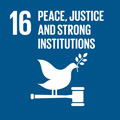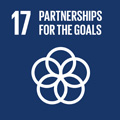- Docente: Angela Romano
- Credits: 8
- SSD: SPS/06
- Language: English
- Moduli: Angela Romano (Modulo 1) Angela Romano (Modulo 2)
- Teaching Mode: In-person learning (entirely or partially) (Modulo 1); In-person learning (entirely or partially) (Modulo 2)
- Campus: Forli
- Corso: Second cycle degree programme (LM) in International relations and diplomatic affairs (cod. 6750)
-
from Sep 25, 2025 to Dec 18, 2025
Learning outcomes
The course aims to provide the tools and knowledge to understand the evolution of the international relations in the period between the Congress of Vienna and the end of the Cold War. Through the reconstruction of the events, protagonists and crises that marked international relations in the 19th and 20th centuries, students will acquire the skills and analytical tools to grasp the complex issues underlying the international dimension of political systems and to frame, with autonomous and critical reflection, the multiple scenarios of contemporary geopolitics. The course aims to provide the historical and conceptual foundations that will enable students to develop an original and critical approach to the study of international relations within the broader context of international and diplomatic sciences. By the end of the course, students will be familiar with the protagonists and the main developments of international relations in their bilateral and global dynamics and will be able to interpret the major political and geopolitical transformations that occurred in the European and non-European spheres during the contemporary age.
Course contents
The course focuses on the various international systems that characterised the world between 1815 (the Congress of Vienna) and 1990 (the end of the Cold War), and notably:
- The Concert of Europe (1815–1914)
- The post-WW I international system (1919–1939)
- The post WW 2 international system: consensual global regimes (1944–1947): origins and creation of the United Nations; governing the world economy: Bretton Woods Conference, Havana Conference and the still-born International Trade Organization, the GATT.
- The actual post WW 2 international system: the Cold War (1947–1990): of East, West and non-aligned.
For each of the above-mentioned international systems lectures will present:
– the international system, its main features and rules
– the actors that supported it, those who challenged or rejected it, and their rationales and actions
– the crises and eventual fall of the system.
Readings/Bibliography
– International History of the Twentieth Century and Beyond, edited by A. Best, J. M. Hanhimäki, J. A. Maiolo and K. E. Schulze (Routledge, 2025).
– Specific material for the weekly topics will be provided on Virtuale.
Teaching methods
The course is composed of 20 classes (2 hours each), of which:
– 17 lectures given by the lecturer. Students are anyway expected to prepare ahead of each class by reading the assigned textbook chapters.
– (the last) 3 classes devoted to students' group presentations and debates.
Assessment methods
Attending students:
– 50% of the grade: assessed in-class group presentation on a specific topic from a proposed list.
– 50% of the grade: individual oral exam on the course programme to be taken in the winter exam session immediately following the course.
Non-attending students:
100% of the grade: oral exam on the entire course programme.
Teaching tools
The following tools will be made available to students ahead of the course on Virtuale:
- PowerPoint Presentations of the lectures
- Online course material: extra readings on specific topics
- Online course material: primary sources on specific topics.
Office hours
See the website of Angela Romano
SDGs




This teaching activity contributes to the achievement of the Sustainable Development Goals of the UN 2030 Agenda.
